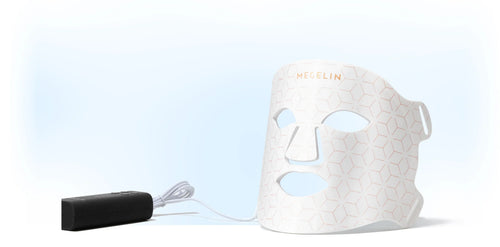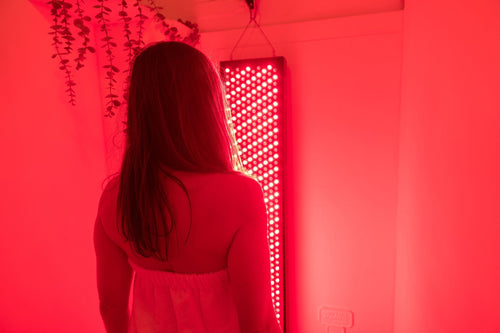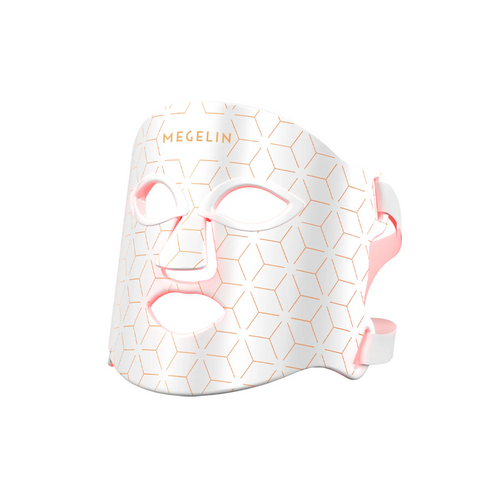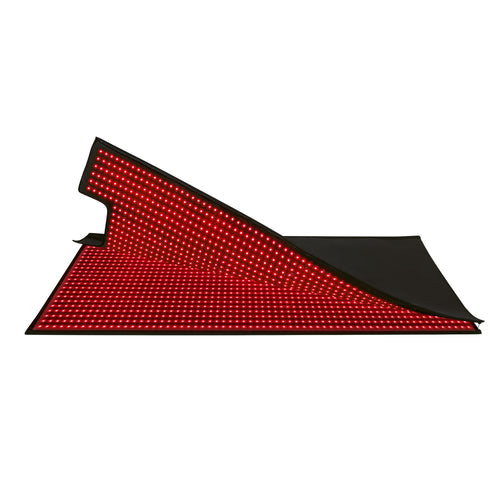
How Effective is Red Light Therapy for Varicose Veins?
megelinbeautyIn the quest for non-invasive treatment options for varicose veins, red light therapy emerges as a promising contender, offering a potential solution that taps into the body's natural healing mechanisms. Varicose veins, characterized by swollen, twisted veins visible just under the surface of the skin, afflict a significant portion of the population, leading to discomfort, swelling, and aesthetic concerns. Innovations in treatment have shifted towards methods that support vascular health, reduce inflammation, and improve circulation, with red light therapy being spotlighted for its role in stimulating collagen production, enhancing skin health, and promoting cellular healing. This therapy’s growing popularity is underpinned by its ability to address key factors contributing to varicose veins, such as poor blood flow and weakened vein valves, without the invasiveness of traditional surgical procedures.
This article delves deep into how red light therapy for varicose veins operates, breaking down its mechanisms in improving circulation, reducing pain, and mitigating the appearance of both varicose and spider veins. We explore the science behind red light therapy, including its impact on ATP production, fibrosis, and venous reflux, setting the stage for a comprehensive comparison with other available treatment options. The journey through understanding the benefits and limitations of red light therapy will be guided by research, empirical data, and expert opinions to equip readers with a well-rounded view. In addressing questions such as "Can red light therapy help varicose veins?" and examining its effectiveness for venous insufficiency, we aim to provide a holistic perspective on this cutting-edge, non-invasive treatment modality and its place within the broader landscape of vein health solutions.
Understanding Varicose Veins
Varicose veins are defined as swollen, twisted blood vessels that prominently bulge just under the skin's surface, typically manifesting in the legs, feet, and ankles. These veins, which may appear blue or purple, can cause discomfort ranging from pain to itching. Surrounding these are spider veins, smaller red or purple lines that also surface close to the skin [1].
Symptoms of Varicose Veins
Individuals with varicose veins often experience a variety of symptoms. The most noticeable are the bulging veins themselves, which are twisted, swollen, and can develop in clusters. These veins are usually blue or purple and appear just below the surface of the skin. Symptoms extend beyond visual changes, including a sensation of heavy legs, particularly after physical activity, and itching around the affected areas. Pain is another common symptom, often described as an achy or sore feeling behind the knees, accompanied by muscle cramps. Swelling in the legs, ankles, and feet is typical, and in severe cases, varicose veins can lead to skin discolorations and the formation of venous ulcers [1].
Causes of Varicose Veins
The development of varicose veins is primarily due to the weakening of vein walls and valves. This weakening can occur for several reasons, including hormonal changes, the natural aging process, excess weight, wearing restrictive clothing, and prolonged periods of standing which increase the pressure inside the veins. When vein walls weaken, the increased blood pressure causes the veins to enlarge. As they stretch, the valves designed to keep blood flowing in one direction fail to function properly, leading to blood pooling and further vein swelling [1].
In summary, understanding both the symptoms and causes of varicose veins is crucial for identifying and managing this condition effectively. By recognizing the early signs and understanding the underlying causes, individuals can seek appropriate treatment to alleviate symptoms and prevent further vein damage.
What is Red Light Therapy?
Red Light Therapy (RLT), also known as Photobiomodulation (PBM), is a therapeutic technique that utilizes low-level wavelengths of red and near-infrared light to promote healing and reduce inflammation. This form of therapy is grounded in its ability to stimulate cellular mechanisms by enhancing the function of mitochondria, the energy powerhouses of cells. When cells absorb light, mitochondrial production of adenosine triphosphate (ATP) is increased, boosting the overall energy available for cellular repair and rejuvenation [2].
Overview and Mechanism
The mechanism of Red Light Therapy involves the absorption of light by mitochondrial chromophores, specifically cytochrome c oxidase. This absorption triggers a cascade of molecular events including the increase in ATP production, a brief surge in reactive oxygen species, and the modulation of nitric oxide levels. These molecular changes contribute to the activation of transcription factors that promote cell survival, proliferation, and migration [2]. Notably, RLT operates under a biphasic dose response, meaning low levels of light have a stimulating effect, whereas high levels can have inhibitory effects on cellular function.
Common Uses
Red Light Therapy is extensively used for a variety of medical and cosmetic conditions. Clinically, it has shown effectiveness in reducing inflammation and pain associated with various health issues, including joint disorders, lung conditions, and brain inflammation. The therapy's role in skin health is particularly highlighted by its ability to stimulate collagen production, thereby aiding in the improvement of skin elasticity and the reduction of wrinkles. Additionally, RLT has been found beneficial in treating skin conditions such as psoriasis, scars, and acne. Its non-thermal and non-invasive nature makes it a safe option for continuous and repeated use, which is essential for chronic conditions [2][3][4].
The therapeutic benefits of Red Light Therapy extend beyond skin health, offering improvements in muscle repair, pain relief, and inflammation reduction across various parts of the body. This makes it a versatile treatment option in both medical and aesthetic fields, continually supported by ongoing research and clinical trials [3][4].
How Red Light Therapy Helps Varicose Veins
Improving Blood Flow
Red light therapy has been observed to significantly enhance blood circulation, particularly beneficial for individuals with varicose veins. By stimulating the proliferation of tiny blood vessels and supporting the growth of endothelial cells that form the walls of these vessels, red light therapy promotes healthier blood flow [5]. This process is crucial as it helps alleviate the pressure in the swollen veins characteristic of varicose conditions. Moreover, a study involving both diabetic and non-diabetic participants demonstrated that red light therapy could increase blood flow in those suffering from chronic non-healing skin wounds on their lower limbs, indicating its potential in improving vascular health [5].
Minimizing Oxidative Stress
One of the pivotal mechanisms by which red light therapy aids in the management of varicose veins is through the reduction of oxidative stress. Oxidative stress results from an imbalance between reactive oxygen species (free radicals) and antioxidants in the body, leading to inflammation and cellular damage. Red light therapy helps modulate this imbalance, thereby reducing inflammation, which is a common underlying factor in varicose veins [5]. The treatment's ability to enhance cellular function and energy production through improved mitochondrial activity further supports the body's natural healing processes, potentially preventing the progression of varicose veins [5]. Notably, Dr. Michael Hamblin, a leading researcher in light therapy, has highlighted the consistent anti-inflammatory effects of red light therapy, which contribute to its therapeutic benefits [5].
Other Treatment Options for Varicose Veins
Comparison with Laser Therapy
Laser therapy for varicose veins involves techniques like endovenous laser ablation, where a fiber optic laser is inserted into the vein. When activated, this laser transmits light energy, causing heat injury to the vein wall which leads to the collapse of the vessel [6]. This method contrasts with simple laser treatments that target spider veins and superficial varicose veins by delivering bursts of light to the affected areas, causing them to fade over time [7].
Surgical Options
Surgical interventions for varicose veins include procedures such as ligation and stripping, where veins are surgically removed [8]. This option is generally reserved for severe cases involving complications like leg ulcers [9]. Ambulatory phlebectomy offers another surgical route, involving small skin punctures through which varicose veins are removed, typically resulting in minimal scarring [8].
Endoscopic vein surgery represents a more advanced surgical option, utilizing a tiny camera to guide the removal of veins through small incisions [8]. This method is part of a broader shift towards minimally invasive or noninvasive procedures that aim to reduce recovery times and improve patient outcomes [10]. These newer techniques, such as radiofrequency ablation, use radio waves to heat and collapse the vein walls, offering an alternative to more invasive surgeries [10].
In cases where less invasive treatments fail, procedures like vein ligation and stripping may be necessary. This involves tying off the veins before removing them, often required for patients with extensive varicose veins causing significant symptoms [10].
Conclusion
Throughout this exploration, we've delved into the effectiveness of red light therapy as a promising non-invasive treatment option for varicose veins, juxtaposing its benefits against traditional and contemporary therapeutic practices. Through stimulating collagen production, enhancing skin health, and promoting cellular healing, red light therapy stands out for its role in improving blood flow and minimizing oxidative stress, key factors contributing to the development and exacerbation of varicose veins. The comparative analysis with other treatment modalities, including laser therapy and surgical interventions, further positions red light therapy as a beneficial alternative, potentially offering relief and improved vascular health without the invasiveness or recovery time associated with surgical options.
In light of the evidence and expert opinions presented, red light therapy emerges as a valuable addition to the arsenal of treatments for varicose veins, offering a blend of efficacy, safety, and non-invasiveness. Its broader implications for enhancing overall vascular health and skin condition amplify its appeal not just to those suffering from varicose veins, but also to a wider audience seeking preventive care. Future research and continued clinical trials will be pivotal in fully elucidating its potential, guiding the integration of red light therapy into comprehensive treatment plans that address the multifaceted nature of varicose veins and venous insufficiency.
FAQs
- Can red light therapy alleviate the appearance of leg veins?
Red light therapy, also known as LED light therapy, utilizes light-emitting diodes (LEDs) to encourage cell rejuvenation and healing. While it is effective for various skin conditions such as acne, eczema, psoriasis, and rosacea, it does not specifically target or improve spider veins. - Is red light therapy beneficial for healing blood vessels?
Red light therapy can support wound healing by reducing inflammation in cells and stimulating the formation of new blood vessels, a process known as angiogenesis. This can indirectly benefit the overall health of blood vessels. - Can infrared light eliminate spider veins?
Infrared light is used in conjunction with microsclerotherapy to enhance the treatment of thread veins, spider veins, and other small broken veins. It aids vascular surgeons by improving the visualization of the veins, allowing for more precise targeting during treatment. - Is blue light effective in removing spider veins?
Although some at-home blue light pens claim to remove spider veins, there is no scientific research supporting these claims. While a few users report minor improvements, the majority do not see any significant change in the appearance of their spider veins.
References
[1] - https://my.clevelandclinic.org/health/diseases/4722-varicose-veins
[2] - https://www.ncbi.nlm.nih.gov/pmc/articles/PMC5523874/
[3] - https://www.webmd.com/skin-problems-and-treatments/red-light-therapy
[4] - https://www.healthline.com/health/red-light-therapy
[5] - https://platinumtherapylights.com/blogs/news/red-light-therapy-for-varicose-veins
[6] - https://www.lighttherapyinsiders.com/red-light-therapy-for-varicose-veins/
[7] - https://www.bcm.edu/healthcare/specialties/cardiovascular-medicine/vascular-health/varicose-veins/noninvasive-treatments-for-varicose-veins
[8] - https://www.medicalnewstoday.com/articles/321703
[9] - https://www.stlukes-stl.com/health-content/medicine/33/000173.htm
[10] - https://www.healthline.com/health/noninvasive-varicose-vein-treatment











